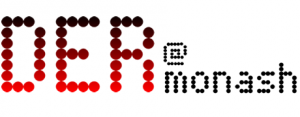This essay points to a global problem evident in the field of ‘Internet Addiction’. Heavy Internet use is positioned as problematic based on an outdated, self-selecting test, and an extraordinary amount of quantitative research that continues to perpetuate abnormality. The limitations of the research in this field are highlighted. The Internet’s infiltration into our public and private lives has far-reaching consequences. Many within society depend on the Internet for social interaction, the immediacy of contact regarding facts and current affairs, and as a source for research on topics that are of interest. Yet, the impact on health, sociability, education and greater society has been insufficiently documented via qualitative means – an oversight given the societal and technological change evident in being able to be ‘always’ online. An argument is presented for the need to obtain more nuanced understandings of how people’s lives are shaped by the choices they make.
Author: Nicola F. Johnson
Introduction
Many psychometric diagnosticians across the globe claim obsessive Internet engagement is detrimental to education, health and greater society. In this review article, I wish to point to the problems with the quantification of psychometric measures to pathologize or impose labels on those considered to be ‘Internet addicts’. I point out the limitations of quantitative research and challenge the dominance of questionable, yet modified scales in the field of Problematic Internet Use. I critique the pathologization and medicalization of heavy Internet use as everyday phenomena.
Internet addiction disorder (IAD) was coined as a spoof in the 1990s by American Ivan Goldberg (1997) and reified as a commonly used phrase in cultural, sociological, popular, and information technology contexts during the early 2000s. Many human conditions have been pathologized or medicalized as being abnormal, deviant, or problematic. IAD is one of them and has had various labels and acronyms assigned to explain the ‘disorder’. These have included Compulsive Internet Use (CIU), Excessive Internet Use (EIU), Problematic Internet Use (PIU), Pathological Internet Use (PIU), Internet Abuse (IA), Internet Use Disorder (IUD), and most recently, Internet Gaming Disorder (APA DSM-5, 2014).
Internet Addiction (or variations thereof) was suggested for inclusion in the recently released American Psychiatric Association Diagnostic and Statistical Manual of Mental Disorders No. 5 (Young, 2004; Block, 2008), but remains a recommended condition for further study in Section III Emerging Measures and Models. IAD was firstly placed under the category of ‘impulse control disorder’ (Young, 1998). Other impulse control disorders include ‘sex addiction, kleptomania, pyromania and gambling addiction’, but now, IAD is placed under ‘substance use and addictive disorders’ (APA DSM-5, 2014). The fact sheet provided online states,
This condition is included to reflect the scientific literature on persistent and recurrent use of Internet games, and a preoccupation with them, can result in clinically significant impairment or distress. Much of this literature comes from studies in Asian countries. The condition criteria do not include general use of the Internet, gambling, or social media at this time (APA DSM-5, 2014b).
It should be noted that gambling disorder is also now listed in the category of ‘substance use and addictive disorders’ beside Internet Gaming Disorder (APA DSM-5, 2014); synonyms for Internet Gaming Disorder in the online DSM-V include Internet use disorder, Internet addiction, or gaming addiction.
The problem of quantification and medicalization
The pathologization or medicalization of everyday problems or issues is not new. The stigmatisation of what is considered ‘Other’, or abnormal, or deviant, or problematic continues in many facets of life. “Behaviors that were once defined as immoral, sinful, or criminal have been given medical meaning, moving from badness to sickness” (Conrad, 2005: 322-3). The imposition of what is considered moral, normal, safe or low risk is permeated throughout the multiple forms of media to which society is exposed. The rise of lifestyle television shows, weight loss regimes and healthy living discourses impose values and germinate fears to which we are subject. Many of these messages that shape the choice of certain products and lifestyle practices are based on the prevailing quantification of categorical data pertaining to epidemiological risk. These categories are constructed and though they may aim to be impartial, they are embedded or embodied with values which have also been imposed on those that design the scales used in randomized controlled trials. Kavanagh (2001: 100) claimed quantitative techniques classify people according to certain categories but that these categories are not neutral:
These categories are social products – they reflect the preferences of researchers, contemporary understandings of health and illness, and dominant political and economic paradigms. … the categories become ways of understanding people, or tools for individuals to understand themselves. Indeed, through categorization particular types of people are ‘made’.
As Keane (2002), identified, discourses surrounding addiction produce constructions surrounding the right way to live, be, the right kind of body to have and the right sort of relationships to have.
Much of the current literature in this field is quantitative and utilizes modifications of Kimberly Young’s Internet Addiction Test (1998) which was developed from the diagnostic criteria for pathological gambling, a seemingly awkward mismatch between an environment and an activity. Many questions on that dated test are simply not applicable in today’s Western society, due to our thorough utilization of email and social networking for communication with colleagues, friends and family, and the rise of the smartphone. Questions include: ‘How often do you check your e-mail before something else that you need to do (item 7)?’, and ‘How often do you find yourself saying “just a few more minutes” when on-line (item 16)?’ As much of our work is conducted online, and much socialising is conducted online, there appears to be a tension with querying these functionalities of our every day lives which have developed as a result of the saturating permeation of digital technologies and the world wide web. The question, ‘How often do you fear that life without the Internet would be boring, empty, and joyless (item 12)?’ also seems at odds with what we do in our everyday lives. Many of us would be hugely limited in our ways of operating if we did not have constant online connections. Upon completion of the Internet Addiction Test, scores are categorized according to being an average on-line user, someone who experiences occasional or frequent problems because of the Internet, or finally that Internet usage is causing significant problems in one’s life (Young, 2014). In a digital age, it seems inappropriate to associate everyday phenomena with problematic labeling and health ‘solutions’.
While it is claimed that the IAT is psychometrically validated (Chang & Law, 2008; Hawi, 2013; Pawlikowski et al, 2013; Widyanto & McMurren 2004), it seems that many well-meaning researchers adhere to a ‘blind faith’ in science and scientific method, and do not draw on a much needed critical eye to consider not only the dated origins and problematic base on which the IAT was derived, but the plethora of influences, contexts, values, conveniences, modalities, textual representations, and cultural practices that have led us to our arguable dependence on the Internet. The field lacks critical engagement with its own categories of investigation.
This phenomena is unlike other deviant behaviours which are pathologised by psychiatrists and the medical profession, quantified by epidemiology – a theory in itself with its own set of complexities (Krieger, 2011). It is unique because almost everyone in developed countries engages with and utilises digital technologies. Unlike attention deficit hyperactivity disorder (ADHD), or depression, or other psychological behaviours, not everyone experiences an introductory or foundational engagement with these symptoms of phenomena. The Internet can enable unhelpful and destructive practices (Johnson, 2009), and others have found that people who suffer from depression or anxiety are more likely to use the web (Morrison & Gore, 2010), and co-morbidity – whereby other psychological disorders are present – are a possibility in the lives of those whose Internet use is considered very heavy (Spada, 2014).
Numerous and recent studies continue to employ this Internet Addiction Test (IAT) (e.g. Chang and Law, 2008; Gencer & Koc, 2012; Montag et al., 2010; Morrison & Gore, 2010; Ni et al., 2009; Spada et al., 2008; Stavropoulos et al., 2013; Tsitsika et al., 2008; Velezmoro et al., 2010), albeit, some with modifications. Other studies continue to use Young’s diagnostic criteria developed in 1998 (Wang et al, 2013). Other researchers have further developed psychometric scales such as the Internet Related Problem Scale (Armstrong et al., 2000), the Generalized Problematic Internet Use Scale 2 (Caplan, 2010; Caplan et al., 2009), the Problematic Internet Use Questionnaire (Demetrovics et al., 2008; Thatcher et al., 2008), the Chen Internet Addiction Scale (Ko et al., 2009), the Index of Problematic Online Experiences (Mitchell et al., 2008), the Diagnostic Questionnaire for Internet Addiction (Siomos et al., 2008), the Compulsive Internet Use Scale (Meerkerk et al., 2010), and Internet Abuse (Blau, 2011). Other research studies have focused on particular aspects of Internet use such as online gaming (Hussain et al, 2012; Hellman et al, 2013; Brus, 2013), online gambling (King et al, 2014; Yau et al, 2014), or Internet pornography (Brand et al, 2011), and clarifying the differences between these practices under the umbrella of PIU or IAD or Internet gaming disorder.
I am not dismissing the quantity of quantitative research that has been conducted throughout the world about this phenomena. Additionally, I wish to assert that I am not against quantitative research. There are limitations with all methodologies and approaches. But I do wish to point out that by imposing psychometric scales on behaviour that is not well-understood is an uncomfortable space because this has led to Internet over-users or heavy users or addicts being pathologized as abnormal. Their everyday practices are considered deviant and this has led the supposed condition being medicalized (Conrad, 2005). Pyett (2001) goes further to claim that “all scientific methods and technologies are situationally constructed” (116). Therefore, we cannot rely on ‘scientific method’ to believe that quantitative research in this area is not without its own biases. Keane et al (2011) claimed “all diagnostic instruments and practices construct their objects rather than describe a pre-existing ‘reality’” rather than seeing “reality as partially produced within the scientific processes used to ‘observe’, ‘measure’ or ‘diagnose’ it” (p. 868). I argue that we do not know deeply enough about the realities of every day life for those who are constantly connected online.
I am not dismissing the notion that Internet use can be problematic. Internet use can be destructive and negative, but I am concerned that we don’t know enough about the realities and experiences of heavy Internet use. People are being labelled as abnormal and that their practice is detrimental without being fully aware of the reality, impact and existence of heavy Internet use. If heavy Internet use is so prevalent, why is it considered to be a problem?
More needs to be known about the performances and realities of everyday practices such as these, particularly because there are social consequences of medicalization. Conrad (2007) states the obvious: “Virtually any human difference is susceptible to being considered a form of pathology, a diagnosable disorder, and subject to medical intervention” (148). Additionally, the “great danger here is that transforming all difference into pathology diminishes our tolerance for and appreciation of the diversity of human life” (148). Other consequences are the increased predominance of medical definitions of normality and the distribution and intensification of medical social control (Conrad, 2007). It appears that reductionist discourses propagate the desire to break down the complexities and performances of human behaviour into bite-sized chunks.
Medical research and epidemiology privileges quantitative research and ‘scientific method’, yet as Kavanagh (2001) explained, “all quantitative methods enable some understandings and obscure others” (105). As argued elsewhere (Johnson, in press), there is an urgent need for exploratory, qualitative research to occur, where the phenomena of heavy Internet use is investigated and systematically documented. This evidence of how persons are living their virtual and biological lives will enable us to accurately relate the multiple ontologies (Mol, 2002) of heavy Internet users without seeking to pathologize or medicalize behaviour considered to be ‘Other’. Unmapped practices will not be maligned akin to notions of harm, risk, ill health and deviance if the phenomenon is approached with a mind to explore and document the unknown.
It appears possible to group the medicalization and quantification of human conditions together, as they are both political and social constructions. Pyett (2001) referred to the construction of ‘subjects’ within medical research. The following quotation provides a useful framework to consider how ‘Internet addicts’ are constructed:
Research also functions to configure its subjects. In social health research, subjects may be configured as passive clients of health services and systems, victims of genetic or pathological defects, ignorant and irresponsible risk-takers, or as responsible agents making informed choices about health and lifestyle factors. Such configurations are political constructions reflecting the values of the researchers and societal norms. (108, emphasis mine)
It appears that a quantification of risk is also an imposition of fear, because if a phenomena is quantified, it must be true. Despite being a social construction, because it is associated with the scientific method, it is therefore beyond question. These categories are being imposed upon people as they have become the lens through which people are being viewed (Kavanagh, 2001).
In a poignant news story (January 20, 2013 from news.com.au), a mother shared how her son had left home, left school, was living on the streets, and spent most of his time in a cybercafé playing online games. He neglected his health, his relationships and his career and schooling opportunities. The 17-year-old was spending the little money he had from his youth allowance on gambling within the online game called Runescape. This kind of phenomena needs in-depth, thorough, holistic investigation rather than research that will quantify its risk. In the words of Pyett (2001), are these heavy Internet users passive clients? Victims? Responsible agents? Reflexive agents?
More in-depth, exploratory, longitudinal research needs to occur in this field (see Brus, 2013 for an in-depth, two-year, qualitative study, and Griffiths, 2010 for useful insights from two case studies), rather than the type of research that has dominated the field. Before accepting the need for treatment programs (Young & de Abreu, 2011), we need to fully understand these ‘behaviours’ and step back from the research which has imposed pre-determined scales and assumptions of abnormality.
More needs to be known about what heavy Internet use – be it problematic or not – means for learning, for attention, for engagement, for motivation, for social relationships and for well-being. Qualitative, exploratory research needs to be conducted in order to obtain more nuanced understanding of people’s lives and the choices they make. By asking heavy Internet users about what their lives are like, understanding will be obtained about the multiple realities (Mol, 2002) and varied accounts of their everyday lives.
References
American Psychiatric Association Diagnostic and Statistical Manual of Mental Disorders No. 5 (2014), APA DSM 5. Available at: http://dsm.psychiatryonline.org/ (date accessed March 26, 2014).
American Psychiatric Association Diagnostic and Statistical Manual of Mental Disorders No. 5 (2014b), Substance Use Disorder Fact Sheet. Available at: http://www.dsm5.org/Documents/Substance%20Use%20Disorder%20Fact%20Sheet.pdf (date accessed March 26, 2014).
Armstrong L, Phillips J G and Saling L L (2000) Potential determinants of heavier internet usage. International Journal of Human-Computer Studies, 53, 537-550.
Blau I (2011) Application use, online relationship types, self-disclosure, and Internet abuse among children and youth: Implications for education and Internet safety programs. Journal of Educational Computing Research, 45:1, 95-116.
Block J J (2008) Issues for DSM-IV: Internet Addiction. The American Journal of Psychiatry, 165:3, 306-307.
Brand M, Laier C, Pawlikowski M, Schachtle U, Scholer T and Alstotter-Gleich C (2011) Watching pornographic pictures on the Internet: Role of sexual arousal ratings and psychological-psychiatric symptoms for using Internet sex sites excessively. Cyberpsychology, Behavior, and Social Networking, 14(6), 371-377.
Brus, A. (2013). A young people’s perspective on computer game addiction, Addiction Research and Theory, 21(5): 365–375.
Caplan S (2010) Theory and measurement of generalized problematic internet use: A two-step approach. Computers in Human Behavior, 26, 1089-1097.
Caplan S, Williams D and Yee N (2009) Problematic internet use and psychosocial well-being among MMO players. Computers in Human Behavior, 25:6, 1312-1319.
Chang M K and Law S P M (2008) Factor structure for Young’s internet addiction test: A confirmatory study. Computers in Human Behavior, 24, 2597-2619.
Conrad P (2005) The shifting engines of medicalization. Journal of Health and Social Behavior, 46:1, 3-14.
Conrad P (2007) The medicalization of society: On the transformation of human conditions into treatable disorders. Baltimore, MD: The John Hopkins University Press.
Demetrovics Z, Szeredi B, and Rozsa S (2008) The three-factor model of internet addiction: The development of the problematic internet use questionnaire. Behavior Research Methods, 40:2, 563-574.
Gencer S L and Koc M (2012) Internet abuse among teenagers and its relations to Internet usage patterns and demographics. Educational Technology and Society, 15:2, 25-36.
Goldberg, I. (1997). Just click no. New Yorker Magazine, January 13, available at http://www.psycom.net/iasg.html (date accessed 22 September, 2014).
Griffiths, M. D. (2010). The role of context in online gaming excess and addiction: Some case study evidence. The International Journal of Mental Health Addiction, 8, 119-125.
Johnson, N. F. (2009). The multiplicities of internet addiction: The misrecognition of leisure and learning. Surrey, UK: Ashgate.
Johnson, N. F. (in press). Arguing the need for qualitative exploration in the field of emerging digital pathologies. Studia Psychologica, 14(1), date accepted 12 August, 2012.
Hawi N S (2013) Arabic validation of the Internet addiction test. Cyberpsychology, Behavior, and Social Networking, 16(3), 200-204.
Hellman, M., Schoenmakers, T.M., Nordstrom, B.R., & van Holst, R.J. (2013).
Is there such a thing as online video game addiction? A crossdisciplinary review, Addiction Research and Theory, 21(2): 102–112.
Hussain, Z., Griffiths, M.D., & Baguley, T. (2012). Online gaming addiction: Classification, prediction and associated risk factors. Addiction Research and Theory, 20(5), 359-371.
Kavanagh A (2001) Epidemiology and technologies of quantification. In J Daly, M Guillemin and S Hill (Eds.), Technologies and health: Critical compromises (90-104). South Melbourne, VIC: Oxford University Press.
Keane H. (2002). What’s wrong with addiction? Melbourne, VIC: Melbourne University Press.
Keane H, Moore D and Fraser S (2011) Addiction and dependence: Making realities in the DSM. Addiction, 106(5), 875-877.
King D L, Delfabbro P H, Kaptsis D, and Zwaans T (2014) Adolescent simulated gambling via digital and social media: An emerging problem. Computers in Human Behavior, 31, 305-313.
Ko C H, Yen J Y, Chen S H, Yang M J, Lin H C and Yen C F (2009) Proposed diagnostic criteria and the screening and diagnosing tool of Internet addiction in college students. Comprehensive Psychiatry, 50, 378-384.
Krieger N (2011) Epidemiology and the people’s health: Theory and context. Oxford, UK: Oxford University Press.
Meerkerk G J, Van den Eijnden R J J M, Franken I H A, and Garretsen H F L (2010) Is compulsive internet use related to sensitivity to reward and punishment, and impulsivity? Computers in Human Behavior, 26, 729-735
Mitchell K J, Sabina C, Finkelhor D, and Wells M (2009) Index of problematic online experiences: Item characteristics and correlation with negative symptomatology. CyberPsychology and Behavior, 12:6, 707-711.
Mol A (2002) The body multiple: Ontology in medical practice. Duke University Press: London, UK.
Montag C, Jurkiewicz M, and Reuter M (2010) Low self-directedness is a better predictor for problematic internet use than high neuroticism. Computers in Human Behavior, 26:6, 1531-1535.
Morrison C M and Gore H (2010) The relationship between excessive internet use and depression: A questionnaire-based study of 1,319 young people and adults. Psychopathology, 43, 121-126.
News.com.au (Jan 20, 2013) Mum’s cry for help after her son becomes addicted to role-playing game Runescape http://www.news.com.au/technology/gaming/mums-cry-for-help-after-her-son-becomes-addicted-to-role-play-game-runescape/story-e6frfrt9-1226557767288 (date accessed 22 September, 2014).
Ni, X, Yan, H, Chen S, and Liu Z (2009) Factors influencing Internet addiction in a sample of freshmen university students in China. CyberPsychology and Behavior, 12:3, 327-330.
Pawlikowski M, Altstotter-Gleich C, and Brand M (2013) Validation and psychometric properties of a short version of Young’s Internet Addiction Test. Computers in Human Behaviour, 29, 1212-1223.
Pyett P (2001) Innovation and compromise: Responsibility and reflexivity in research with vulnerable groups. In J Daly, M Guillemin and S Hill (Eds.), Technologies and health: Critical compromises (105-119). South Melbourne, VIC: Oxford University Press.
Siomos K E, Dafouli E D, Braimiotis D A, Mouzas O D, and Angelopoulos N V (2008) Internet addiction among Greek adolescent students. CyberPsychology and Behavior, 11(6), 653-657.
Spada M M, Langston B, Nikcevic A V, and Moneta G B (2008) The role of metacognitions in problematic Internet use. Computers in Human Behavior, 24:5, 2325-2335.
Spada M M (2014) An overview of problematic Internet use. Addictive Behaviors, 39, 3-6.
Stavropoulos V, Alexandraki K, and Motti-Stefanidi F (2013) Flow and telepresence contributing to Internet abuse: Differences according to gender and age. Computers in Human Behavior, 29, 1941-1948.
Tsitsika A, Critselis E, Kormas G, Filippopoulou A, Tounissidou D, Freskou A, et al. (2008) Internet use and misuse: A multivariate regression analysis of the predictive factors of internet use among Greek adolescents. European Journal of Pediatrics, 168, 655-665.
Thatcher A, Wretschko G, and Fridjhon P (2008) Online flow experiences, problematic Internet use and internet procrastination. Computers in Human Behavior, 24, 2236-2254.
Velezmoro R, Lacefield K, and Roberti J W (2010) Perceived stress, sensation seeking, and college students’ abuse of the Internet. Computers in Human Behavior. 26(6), 1526-1530.
Wang L, Luo J, Bai Y, Kong J, Luo J, Gao W, and Sun X. (2013) Internet addiction of adolescents in China: Prevalance, predictors, and association with well-being. Addiction Research and Theory, 21:1, 62-69.
Widyanto L and McMurren M (2004) The psychometric properties of the internet addiction test. CyberPsychology and Behavior, 7:4, 443-450.
Yau, Y.H.C., Pilver, C.E., Steinberg, M.A., Rugle, L.J., Hoff, R.A., Krishnan-Sarin, S. & Potenza, M.N. (2014). Relationships between problematic Internet use and problem-gambling severity: Findings from a high-school survey, Addictive Behaviors, 39, 13-21.
Young K S (1998) Caught in the Net: How to recognize the signs of Internet addiction – and a winning strategy for recovery. New York: John Wiley and Sons, Inc.
Young K S (2004) Internet addiction: A new clinical phenomenon and its consequences. American Behavioral Scientist, 48:4, 402-415.
Young K S and de Abreu, C N (2011) [eds]. Internet addiction: A handbook and guide to evaluation and treatment. New York: John Wiley and Sons, Inc.
Young, K (2014). Internet Addiction Test, available at http://netaddiction.com/internet-addiction-test/ (date accessed March, 26, 2014).







